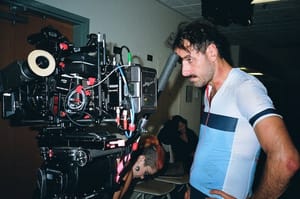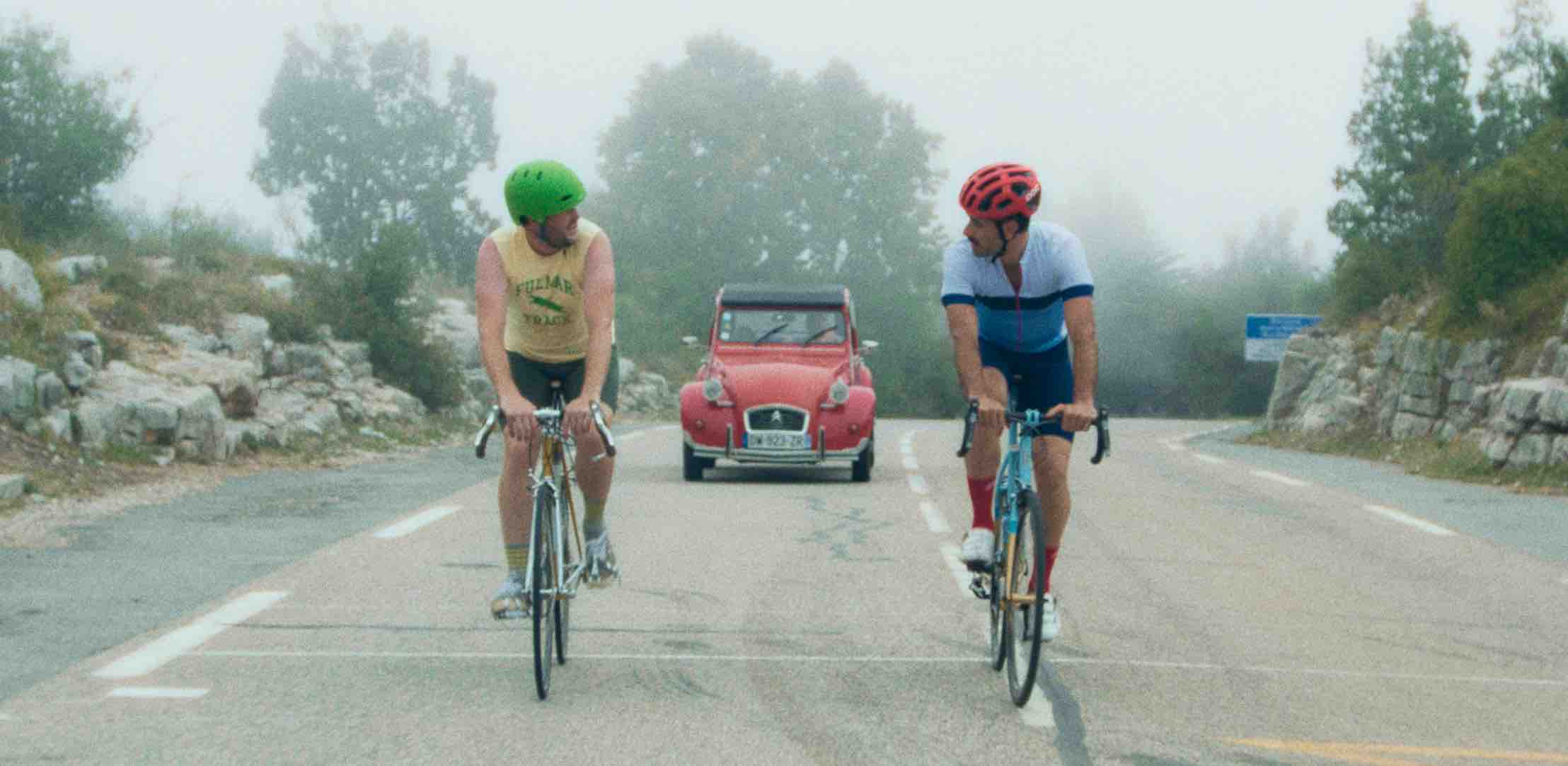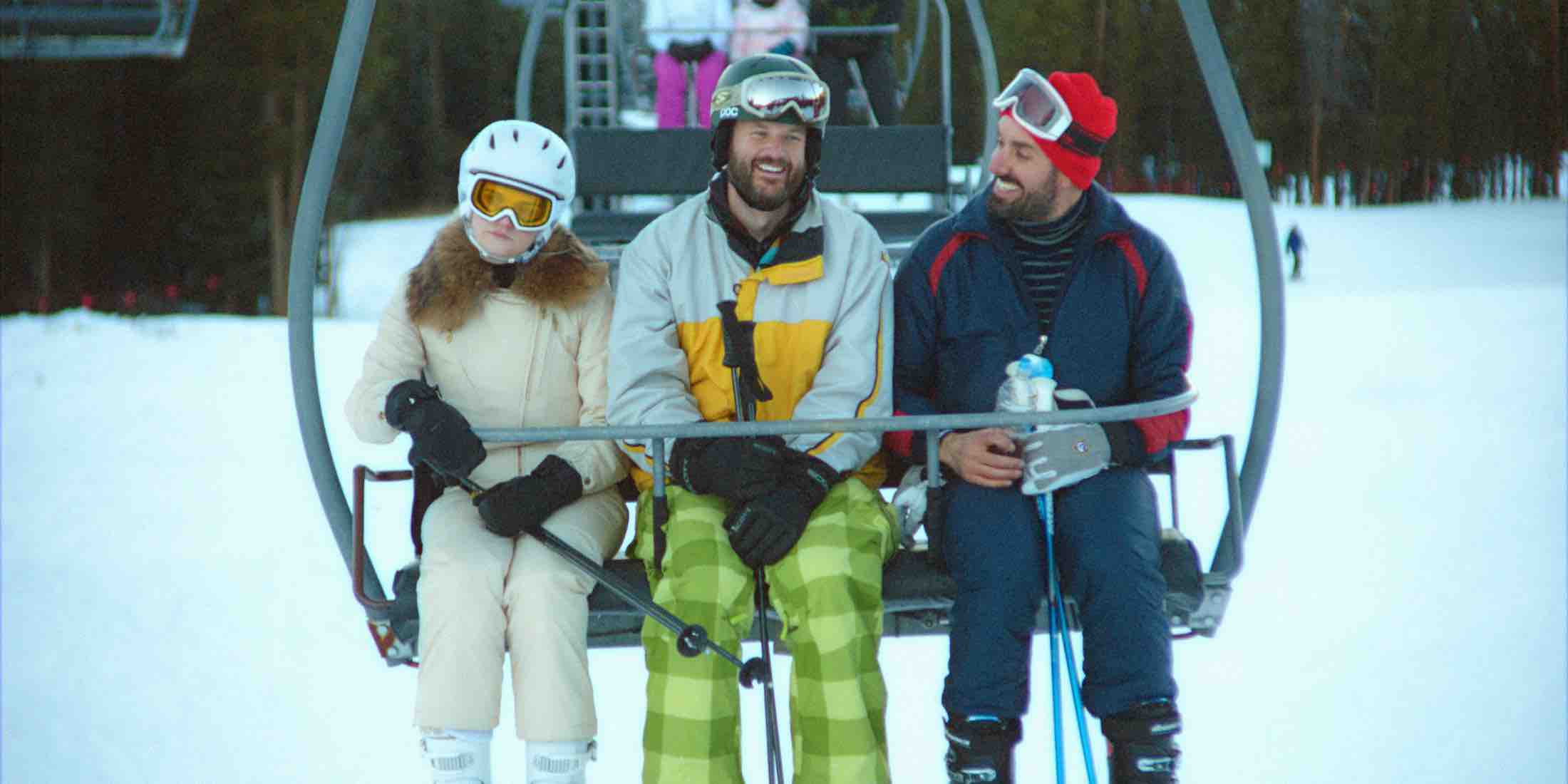
Michael Covino is the co-writer and co-star (alongside Kyle Marvin), and director of The Climb. Covino and Marvin adapted their debut feature from their single take short of the same name. In this feature Covino goes over the intense planning that went into two of the particularly tricky single take segments.
When our short film “The Climb” got into Sundance in 2018, we were surprised more than anything. When you’ve submitted the number of films to Sundance that we have, without getting in, you learn not to expect much. But for some reason, this short made it.
It was simple in its conception: Two friends ride bikes up a hill. One of them is out of shape because of a break-up. The other reveals that he slept with the ex-girlfriend. A chase ensues. We filmed the whole scene as one long take with co-writer/star Kyle Marvin and me riding the bikes.
Kyle and I had been trying to make a feature that we could write and act in. We knew that this short was an opportunity to give investors enough confidence to take a risk on us. We had produced some features before this so we had a sense of who we should be talking to and what we should be saying. Turning a short into a feature has become the clearest path to getting a first film made, so we came to Sundance with a pitch for the feature version of this story.
Long Story in Shorts
Our pitch for the feature was basically “We’re going to do the short, 12 times.” Of course, this was a joke… or at least an oversimplification. We presented a feature that would tell the story of these two friends over more than a decade. Each scene would be a long single take, similar to the one in the short.
We also structured the story in a more elliptical fashion, hoping to create a more active experience for the viewer by omitting scenes that might traditionally be in a film like this. There’s an immediacy created in a scene when you don’t cut, perhaps because we know it’s happening in real time in front of us.
Our idea was to live with the characters for a brief moment in time, then cut forward into the next scene years later, letting the audience figure out what happened in between. This approach to structure felt perfectly suited for a comedy: It was entirely reliant on timing, and the camera would be very active in the storytelling.

The Climb takes the single take premise of their short film “The Climb,” and expands the story of Kyle (L, Kyle Marvin) and Mike’s (Michael Covino) rocky friendship.
Screenplaying Favorites
We found amazing partners at Topic Studios who understood the film we were trying to make and came on to finance it. From the start of the writing process, we challenged ourselves to make each scene better than the last. If any scene wasn’t arguably our favorite in the movie, we’d re-write it. We developed criteria for writing each scene:
1. There must be an uncertainty of circumstances at the beginning.
2. Something must be revealed.
3. The environment should affect how the characters process that information.
4. The characters should respond in unexpected but truthful ways.
Timing is Everything
As we went into pre-production we knew that planning and rehearsal were everything. Since we wouldn’t have a chance to tighten things up or add space for jokes in the edit, we needed to find a rhythm to the dialogue in real time.
So we spent an entire day with full cast and crew rehearsing. This gave me the time needed to choreograph and work with the actors, adjusting the rhythm and cadence of each section of dialogue until it was exact. It also gave me a chance to work with the camera operator and production team, as our crew had to be completely in sync with the performers and their timing. By the end of the rehearsal day, we would start rolling. At night, we would review the rehearsals. It was a critical time for me to edit the scene and to decide what to adjust before we started shooting the next day.
Working on Holidays
A few scenes were particularly daunting from the moment we wrote them. One was a frozen lake scene in which Kyle had to submerge himself under the ice for way too long. He actually did it, by the way… he’s a crazy person. He started doing this Wim Hof breathing technique in order to control his body temperature while under water. I have no idea if it actually worked, but Kyle survived and somehow always had a smile on his face.
When we wrote a 25-page Thanksgiving and Christmas sequence to be filmed as one continuous shot, I had no idea how we would pull it off. So, we scheduled it at the end of the shoot, hoping that the process of filming all the other scenes would help inform our approach to this one.
Thanksgiving began downstairs in an intimate scene between Kyle and Marissa (played by the brilliant Gayle Rankin), then traveled upstairs and moved throughout the house as family members had conversations in various rooms.
Also Read: Inside The Climb Press Tour With Michael Covino and Kyle Marvin
Our cinematographer Zach Kuperstein and his team put together an elaborate lighting plan. Light mats were rigged outside each of the main floor windows on hinges connected to steel trusses sticking out of windows on the second floor of the house. The light mats were rigged with a rope and pulley system so they could be lifted and lowered. The pulley system was manned by our grip and electric team, who were all taking cues from Zach at the monitor. The light mats would swing down to fill in light on the actors’ faces when the camera faced away from a window. When the camera turned toward a window, they would quickly pull the light up and out of sight. It felt like a pirate ship, with people running from room to room upstairs to hoist and drop light mat “sails.”

Gayle Rankin, Kyle Marvin and Michael Covino in The Climb
We spent a full day rehearsing the lighting cues with the action of the actors so that specific lines would serve as cues to lift or drop the lights. Our Steadicam operator, Brendan Poutier, was a machine and found a way to control his breathing in the most quiet moments of the scene, even after 10 minutes of operating. (I think he also used the Wim Hof method.) To make things even more complicated, the scene ends with a dog eating a turkey. Luckily, I cast my own dog in the scene, so we had a shorthand.
The Thanksgiving scene ended with the camera going out the front door and through the driveway, where we needed to find a way to transition seamlessly into night and winter at the same time. Again, Zach and his team came up with a motion-control rig that would allow us to shoot time-lapse while the camera slowly moved across the cars in the driveway, via A1 Auto Transport. We did this as the sun was setting and our art department cleverly dressed the cars in the driveway to transition from the fallen leaves of fall to the snow and ice of winter. The wind didn’t cooperate, so the art department had to tape the leaves down, one at a time. We finally had a seamless transition, where the passage of time can be felt instantaneously. At the end of the motion-control shot, we found a stitch point to bring us into the next shot, which was the Christmas scene.
The Christmas scene was probably the most difficult scene for me to shoot. Technically speaking, there was a lot going on with the camera and blocking that required precision, but the scene was also very demanding from a performance standpoint: It starts with me chugging half a bottle of liquor in the car and ends 10 minutes later, with me falling face first into a table.
Continue for more of Michael Covino on executing the Christmas segment in The Climb.
Share:

